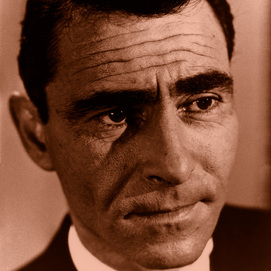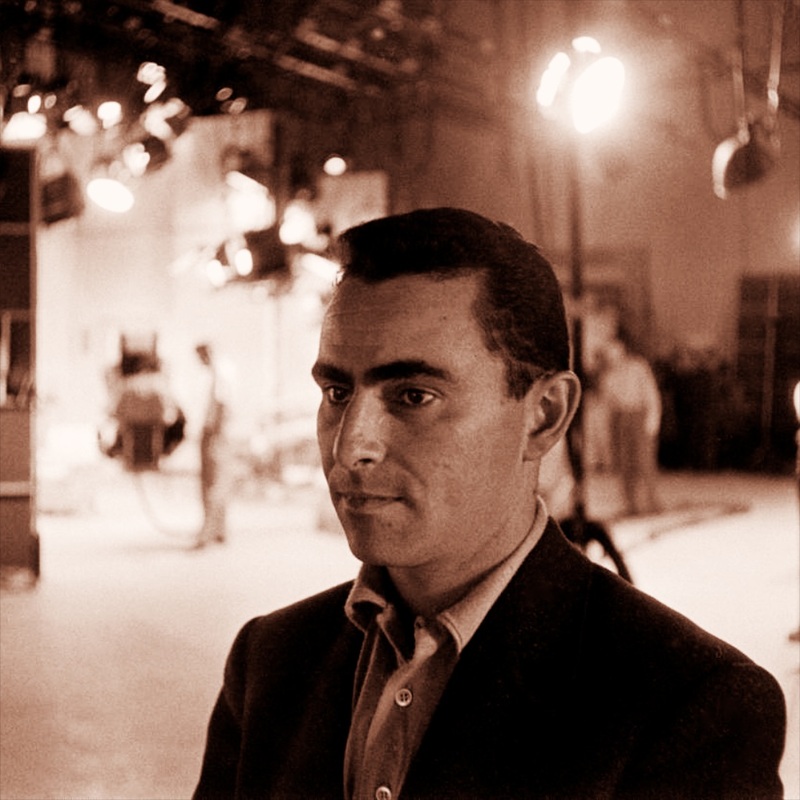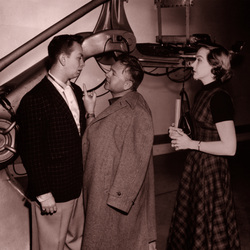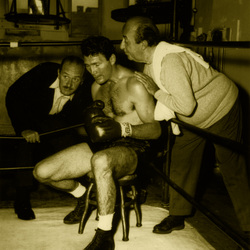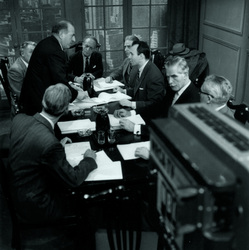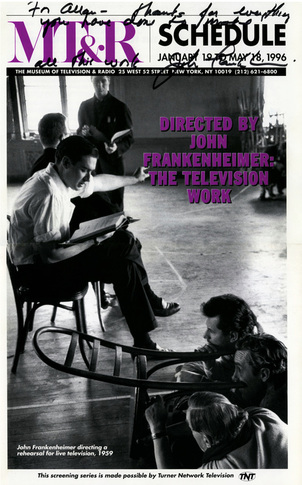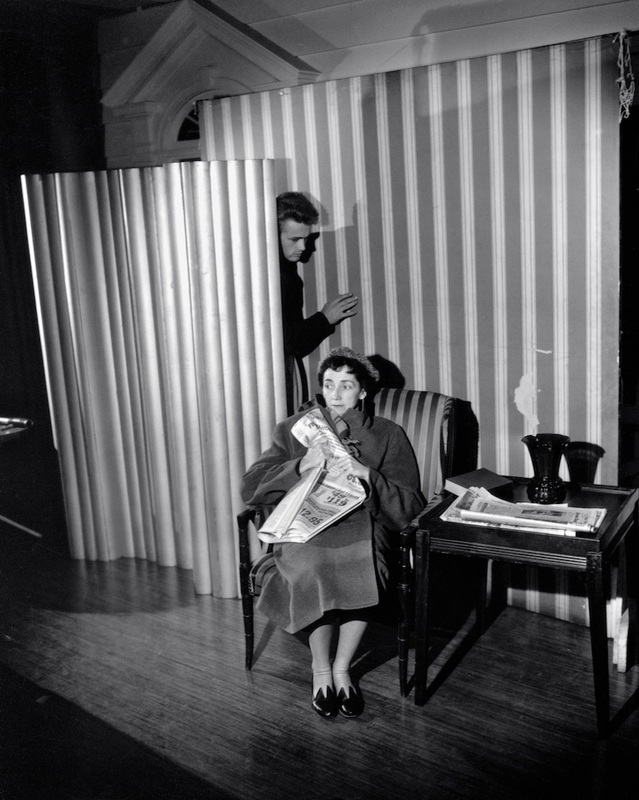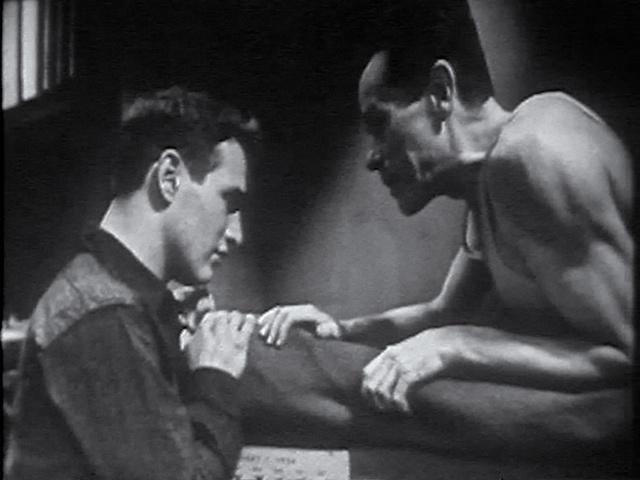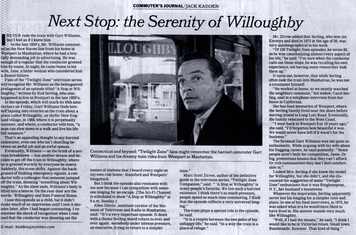|
Rod Serling: The Twilight Zone and Beyond
Tackling as iconic and astonishingly prolific a talent as Rod Serling was a daunting task. A full retrospective of his prodigious output for television (and film) would have occupied our theaters in New York and Los Angeles for more than a year. At three months, this was more of a sampler. I tried to strike a balance between Serling's plays for live television, his less-familiar late-period efforts, and of course his beloved Twilight Zone, one of only a few black-and-white programs to have remained on the air since its original run. |
Exhibition Catalog
Serling and Live Television
|
“All of a sudden, with no preparation and no expectations, I had a velvet mantle draped over my shoulders. I treaded my way through a brand-new world of dollar-sign mobiles hanging from the sky, shaking hands with my right hand, depositing checks with my left, watching my bank account grow, reading my name in the papers and magazines, listening to myself being complimented unreservedly and extravagantly.”
Serling on life after "Patterns" |
Serling was an ex-Army paratrooper unhappily employed in Cincinnati broadcasting when he began mailing in spec scripts to the New York-based live anthologies. "Patterns," his searing expose of big business ethics, was the seventy-second teleplay to roll off his typewriter. A national sensation, it launched him into a rarefied plane of above-title television writers. "For sheer power of narrative, forcefulness of characterization and brilliant climax, Mr. Serling’s work is a creative triumph,” wrote Jack Gould of the New York Times. Barely thirty, Serling greeted his overnight breakthrough with ambivalence—had he sold out, or merely allowed himself a measure of personal expression? Much of his subsequent work dealt with professional men struggling to reconcile the moral, ethical, and psychological tolls of ambition, success, and foisted expectations. It's a theme particularly evident in "Reqiuem for a Heavyweight" and "The Comedian"—which together with "Patterns" brought Serling an unprecedented three consecutive Emmy Awards. His fourth came with The Twilight Zone.
TOP: Serling on the set of "Portrait in Celluloid" (Climax!, 1955). • BOTTOM FROM LEFT: "The Comedian" (Playhouse 90, 1957) with Mel Tormé, Mickey Rooney, and Constance Ford. • "Requiem for a Heavyweight" (Playhouse 90, 1956) with Keenan Wynn, Jack Palace, and Ed Wynn. • On the set of "Patterns" (Kraft TV Theatre, 1955) with Ed Begley (standing) and Richard Kiley (directly across).
